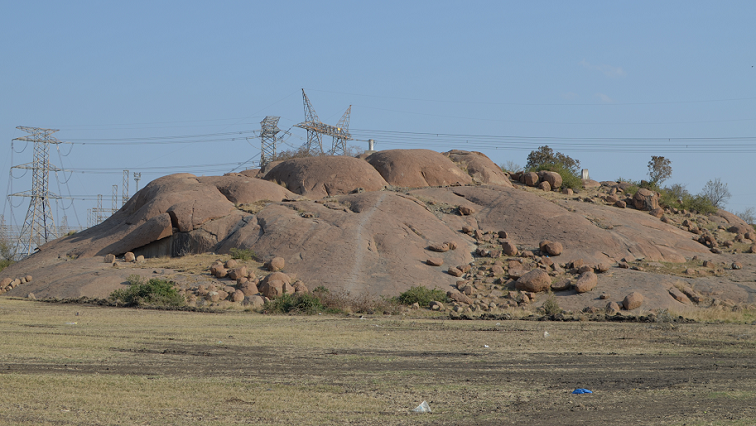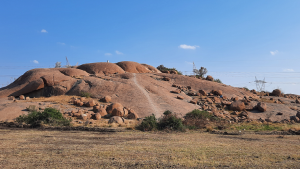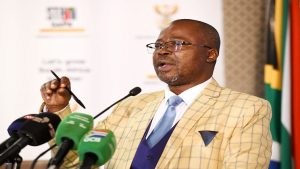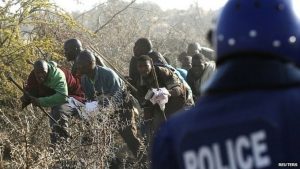On the surface, Nkaneng in Marikana is being made to look good for the upcoming 10th commemoration of the massacre that left 34 miners dead on 16 August 2012 and 44 people deceased in the week that left many wounded with scars lasting a lifetime.
But the residents of Nkaneng speak of underlying issues that need to be looked at. Though some admit that the pay issue raised in 2012, resulting in the strike action that lasted weeks has been resolved thanks to AMCU, many other issues have now arisen.
Some residents say around 2018/19 Sibanye-Stillwater took over from Lonmin but the change has not been all that good for workers in the mines.
Miners speak of ill treatment and violation of their rights by the current owners of Rowland Shaft and the local smelter in the area.
A local residing at Nkaneng (sometimes known as Nkanini) who is known as Mbatha says there are many issues in their community. He says it might look like there are developments now because of the event preparations for what happened eNtabeni (this is the name used by residents when referring to the Koppie) where miners used to gather during the 2012 strike that left 44 people dead, including 34 miners who were shot on 16 August 2012.
He says on any normal day, life which they deem to be normal, is what they face, including electricity issues, air pollution and crime.
Gallery of Marikana:
Photos by Dinilohlanga Mekuto
Mbatha says, “Nothing has changed here, life is as it was here at Nkanini. It’s the same, no change. The only thing we want is for government to come apologise to the people and pay those who were shot at eNtabeni. They are yet to be paid by our government of thieves.”
“Our roads are bad, they are fixing them now because of what is happening eNtabeni (commemoration of the massacre.) The last time they fixed the roads was during the last commemoration and they haven’t done anything since then. They fix the roads when there is an event, just like journalists, they come here during the event.”
“Sibanye has let off many employees here, I myself am currently unemployed, I was dismissed by Sibanye (who Mbatha claims is owned by government). Sibanye came in 2018, rather 2019 and they changed things here. Now we miss Lonmin, we really miss them. A lot of people have lost their jobs, many of them have no work, they just sit at home.”
Mbatha says some workers’ right are violated. “When you go on leave, you do not get paid. This company though, but we are still here because life goes on.”
He says they are losing hope on getting help.
“No one is going to help us here, we have to help ourselves. This will happen by trying to get employment, or by doing your own business efforts, getting livestock like cattle and chickens, just like that woman over there.”
“What we want now is for Ramaphosa to come, give the people money and apologise. If he comes we will welcome him, provided that he talks about money, that’s what we really want. If he doesn’t talk about money, Hay, sorry baba.”
Politics, labour issues and new struggles
Other miners working at the local mines complain about various labour issues, from tax deductions to security concerns in the area.
The miners who spoke on condition of anonymity say some of the issues they are facing in the mines are political. They say issues between NUM and AMCU regarding working conditions and mineworker struggles are causing problems for them.
They also say government doesn’t seem interested in helping them.
“Government is also not helping us. For example, on 16 August, we will be attending the commemoration and we know, if we don’t work on that day, it is no work no pay. We have become used to that, and we don’t care anymore. The only problem is that they now don’t pay us for two days and we do not know why.”
One of the three miners who were willing to engage on the issues faced at Nkaneng says he would appreciate President Ramaphosa’s presence at the commemoration.
“We can’t say he mustn’t come, he is part of government and we can’t stop him from coming (to the commemoration) but he would first have to meet with the president of AMCU (Joseph Mathunjwa) before he can come here.”
If there is one person the miners we spoke to show confidence in, it is AMCU leader Joseph Mathunjwa.
“We trust him, we trust him a lot. Even now, we are waiting for him to come report to us about salary increases that were supposed to come to effect on the 1st of July.”
But there are talks that, other miners are not happy with Mathunjwa, so much that when referring to him, they say, “That man or this man (la ndoda).”
“These issues are political, some came to AMCU from NUM but now they decide to go back to the ANC affiliate NUM because of their nostalgia with the ANC.”
There are victories that have come from the 2012 strike which resulted in the massacre.
“When he came in we were earning around R5 000 but now we are past the R12 000 we fought for. We now earn around R14 000 to R18 000 because of that man (Mathunjwa).”
“Our current struggle now is speaking freely, if we talk, they suspend you or fire you.”
The miners have also raised security concerns, claiming that gunmen (suspected hitmen) were spotted in the area a couple of weeks back but no one was shot. They say the last shooting incident of a miner happened around the 16th of December in 2021.
16 August 2022 will mark ten years since the day that has now become known as the Marikana Massacre where 34 Lonmin miners who were mostly AMCU affiliates were gunned down by SAPS during a live television broadcast at Nkaneng or Wonderkop, outside Marikana, North West.
Below is a map with points of interest around Nkaneng (Marikana) where the massacre happened:






